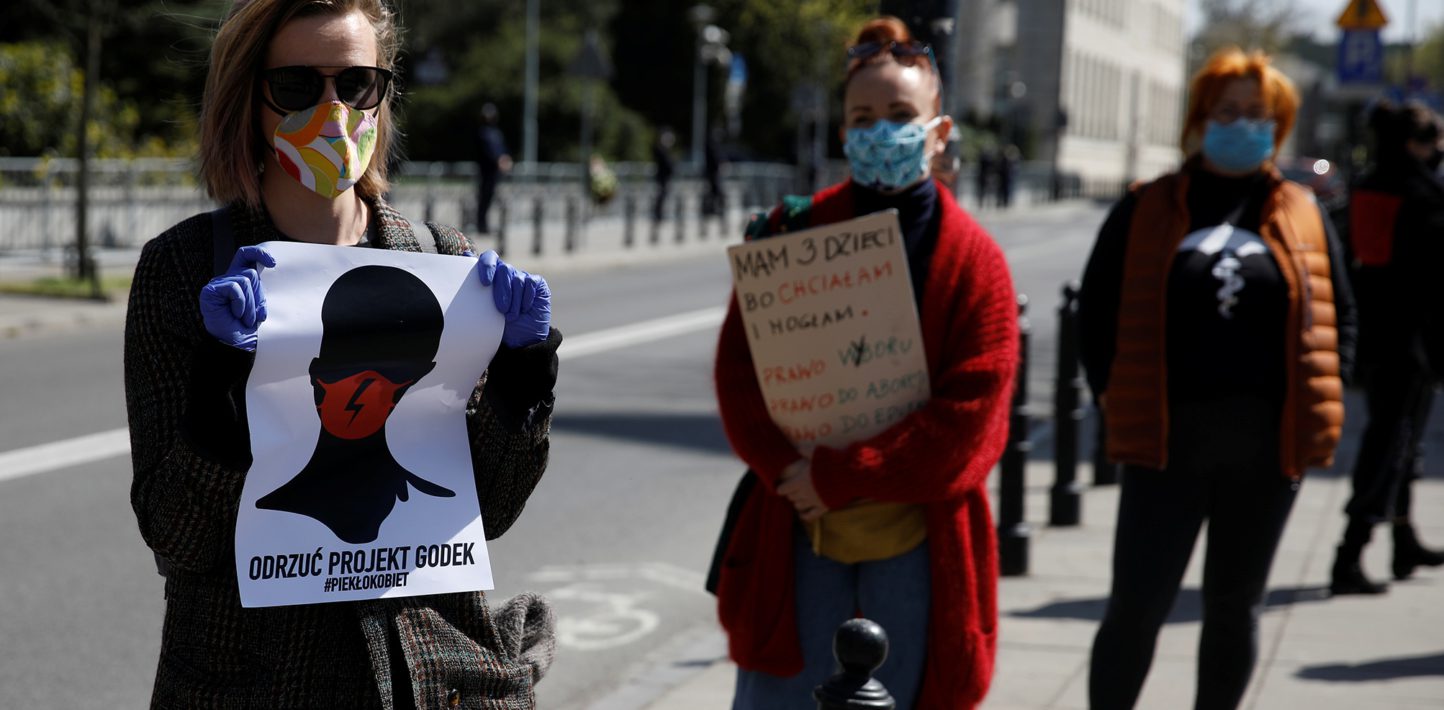These are strange times indeed. The pandemic is exposing the enormous contradictions and inequalities of our societies. For some of us, even though in a privileged position, it seems that our lives have been put on hold and the world as we knew it is no more. We don’t know what the “new normal” will look like. It is a scary time, but it is also a time for hope.
Since the pandemic started, we have seen neighbours smiling at each other, friends and family talking more often, communities supporting those hit hardest, supermarkets prioritizing vulnerable customers, children displaying teddy bears and rainbows in their windows, people and companies making masks and protective equipment, volunteers helping in foodbanks. This is how the future could look like: caring and supporting each other more – more solidarity.
During the lockdown, social distancing – actually, physical distancing – seems to have strengthened the need for social connection, bringing people and communities closer together, organizing in new ways: millions of people clapping in unison to show appreciation for health and essential workers; musicians playing together online and composing songs that celebrate humanity and resilience; theatres and culture opening online to a larger audience; thousands of humorous and sarcastic memes as a tool of resistance to survive this awkward moment.
The COVID-19 pandemic and its response are hitting people in many ways and at many different levels. As always, the hardest hit are the most vulnerable among us. The disproportionate impact that this crisis is having on sectors of society, especially on people already living at the margins, is a call for redesigning our systems, in ways that leave no one behind.
Movements, organizations and activists are coming together to support each other and push for change in new and creative ways – starting with practising self-care and community care (check this fanzine designed by and for youth activists). They are increasing collaboration and sharing initiatives, support and resources to respond to the COVID-19 crisis within the activism community at large via webinars, conferences, training tools, and crowdsourced online documents.
Activism is evolving, as movements and organizations are learning to adapt their tools and systems to build power, organizing and mobilizing people for action overcoming the physical distancing limitations. A crowdsourced research has documented over 140 methods of non-violent action during the pandemic, showing that people power is flourishing within this unprecedented global crisis.
In Poland, women’s rights activists marched, cycled and drove around cities with banners and protested in supermarket queues taking the necessary social distance, to defend sexual and reproductive rights and they won – the regressive bills that had been proposed were frozen in parliament. Activists from all over Europe supported them with #protestathome in solidarity.
The youth-led climate movement has moved online. Every Friday, people on #DigitalStrike post pictures of their placards from home. This year, Earth Day was marked with a 72-hour live-streamed “digital march” with speeches, music and protests and Fridays For Future organized a live-streamed digital strike attended by over 230,000 viewers.
Some movements and organisations organize mass-call, mass-email or mass-Tweet action gatherings in which activists and supporters participate in online coordinated direct action to put public pressure on a target at a key moment, for example during a decision maker’s speech at a conference. Other initiatives include organized rent strikes, posting negative online reviews, drive-by protests, solidarity chains.
We’re in this for the long run, so it is a crucial time for organizers to build stronger and more diverse movements, in ways that acknowledge and overcome the widening digital divide and other inequalities. We should recruit new supporters and activists, through easy sign-ups and low-level asks and by asking people to invite their friends. We should keep nurturing and engaging our communities of supporters and volunteers via virtual meetings, phone calls and webinars, to listen to their needs and their ideas on how we should organize to support them, to build up their skills and to recognize their role and contributions. We should collaborate and build alliances across the sector.
Many people are coming forward to be part of this change, to define alternatives. They are stepping up, joining or supporting movements and organisations. Some are building their organizing and leadership skills to harness this collective power and creativity.
While tirelessly keeping a watch on governments, institutions, companies and other actors’ action or inaction, movements, organizations and activists are also redefining their work and reprioritizing it to address the current needs, and to define the “new normal” in preparation for the post-COVID-19 world.
This crisis offers a huge opportunity for systemic change, starting from acknowledging and addressing the roots of inequality. During this period, we have seen dozens of manifestos, declarations, commitments that have rallied movements, organizations and thousands of people behind their calls for a change of direction towards a more sustainable and equitable world.
Now more than ever is the time to strengthen human rights, to “renegotiate our social contract” and to make different choices for the future – a future that prioritises people and the environment, leaving no one behind.


